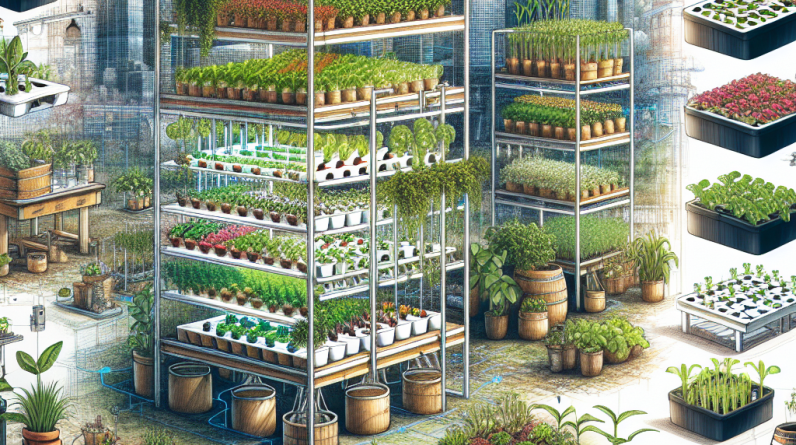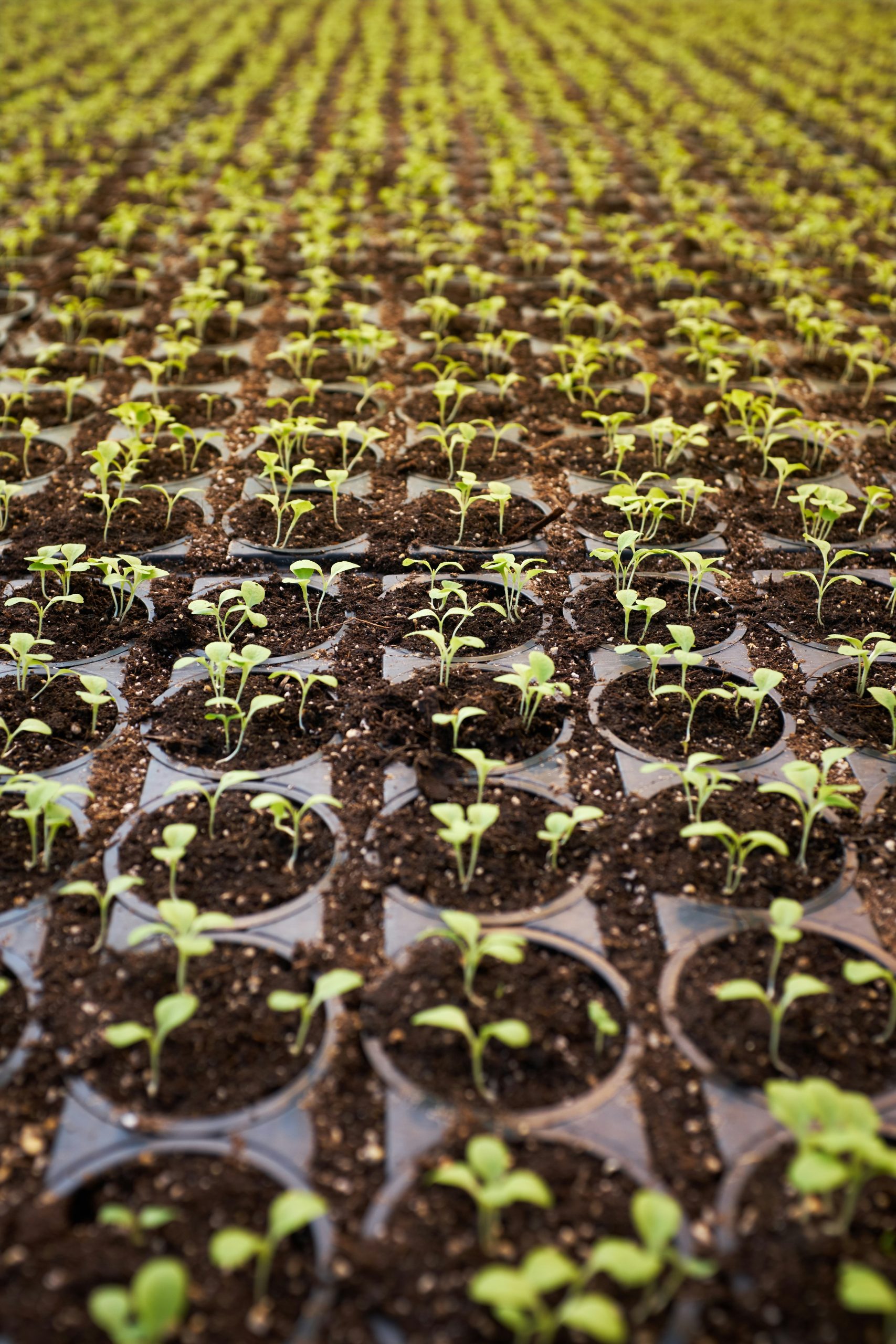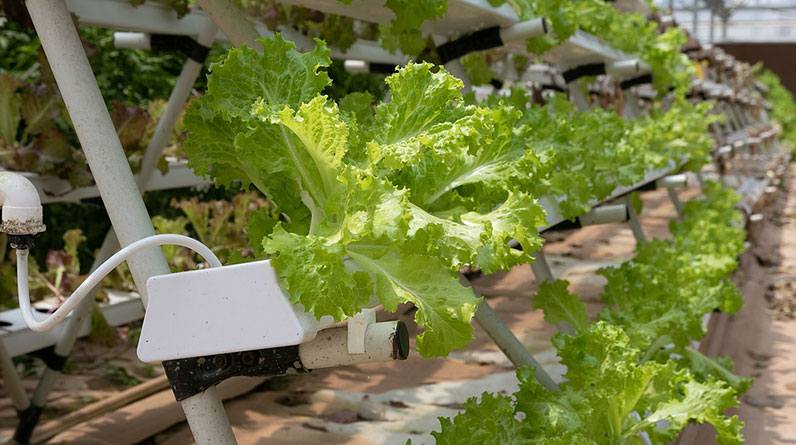
Hydroponic gardening has been gaining popularity in recent years due to its numerous benefits. One of the most innovative and efficient hydroponic systems is the dripper system. This system is a game-changer for those who want to grow plants in a controlled environment without soil.
The dripper system is a type of hydroponic system that utilizes a network of pipes and tubes to deliver nutrient-rich water directly to the plants’ roots. This system is highly efficient as it ensures that the plants receive the right amount of water and nutrients they need to grow. It also reduces water wastage as it recirculates the water, making it an environmentally friendly choice.
One of the benefits of the dripper system is that it allows for a diverse range of plants to be grown, including fruits, vegetables, and herbs. With this system, you can grow your favorite plants all year round, regardless of the weather conditions outside. It is also a great option for those who have limited space as it can be set up in a small area.
Another advantage of the dripper system is that it is easy to set up and maintain. You don’t need to be an expert to install and operate this system. It is also cost-effective as it requires less water and fertilizer compared to traditional gardening methods.
In conclusion, the dripper system is a revolutionary growing technique that offers numerous benefits. It is an efficient, environmentally friendly, and cost-effective way to grow a diverse range of plants. With this system, you can enjoy fresh produce all year round, regardless of the weather conditions outside.
What Is a Hydroponic Dripper System?
 A hydroponic dripper system is a type of hydroponic system that delivers nutrient-rich water directly to the plant’s roots through a network of tubes and drippers. This system is ideal for growing plants in a controlled environment, such as indoors or in greenhouses, as it allows for precise control over nutrient delivery and water usage.
A hydroponic dripper system is a type of hydroponic system that delivers nutrient-rich water directly to the plant’s roots through a network of tubes and drippers. This system is ideal for growing plants in a controlled environment, such as indoors or in greenhouses, as it allows for precise control over nutrient delivery and water usage.
One of the main benefits of a hydroponic dripper system is its efficiency. Unlike traditional soil-based growing methods, hydroponic systems use significantly less water and nutrients, while still producing high yields of healthy plants. Additionally, the closed-loop nature of these systems means that there is less risk of pests and diseases, as the water is constantly recirculated and filtered.
Hydroponic dripper systems are also highly customizable, allowing growers to adjust the nutrient solution and water delivery to meet the specific needs of their plants. This level of control can result in faster growth, larger yields, and higher quality produce.
There are a variety of different types of drippers available for use in hydroponic systems, including pressure-compensating drippers, adjustable flow drippers, and self-cleaning drippers. Each type has its own unique benefits and drawbacks, and growers should carefully consider their options before selecting a specific type of dripper.
In conclusion, a hydroponic dripper system is a highly efficient and customizable method for growing plants in a controlled environment. By delivering nutrient-rich water directly to the plant’s roots, these systems can produce high yields of healthy plants with minimal water and nutrient usage. Whether you’re a seasoned grower or just starting out, a hydroponic dripper system is definitely worth considering for your next growing project.
How Does a Hydroponic Dripper System Work?
A hydroponic dripper system is a popular method of growing plants without soil. It is a simple yet efficient way of delivering nutrients directly to the roots of plants. This system is ideal for those who want to grow plants in a small space, as it requires very little room and can be set up easily.
The hydroponic dripper system works by delivering nutrient-rich water directly to the roots of plants. The water is delivered through a series of tubes and drippers that are placed at the base of the plants. The drippers release water slowly, allowing the plants to absorb the nutrients they need without drowning.
One of the main advantages of using a hydroponic dripper system is that it allows for precise control over the amount of water and nutrients that plants receive. This means that plants can be grown in a more efficient and sustainable way, as there is less waste and less need for harmful chemicals.
Another advantage of this system is that it is highly adaptable. It can be used to grow a wide variety of plants, from herbs and vegetables to flowers and fruit trees. The system can also be adjusted to suit different growing conditions, such as temperature, humidity, and light levels.
In conclusion, the hydroponic dripper system is a simple and effective way of growing plants without soil. It offers precise control over the amount of water and nutrients that plants receive and can be adapted to suit a wide variety of growing conditions. If you are interested in growing plants in a sustainable and efficient way, then the hydroponic dripper system may be the perfect solution for you.
What Are the Benefits of a Hydroponic Dripper System?
Hydroponic gardening has become increasingly popular in recent years, and for good reason. One of the most effective and efficient hydroponic systems is the dripper system. This system offers numerous benefits that make it a top choice for many growers.
First and foremost, a hydroponic dripper system allows for precise control over the amount of water and nutrients plants receive. This means that plants can receive exactly what they need, without any waste. Additionally, this system ensures that plants receive a consistent supply of water and nutrients, which can lead to faster growth and higher yields.
Another benefit of a hydroponic dripper system is that it is easy to set up and maintain. With a few basic tools and some knowledge, anyone can install and operate this system. Additionally, because the system is closed, there is less risk of pests and diseases affecting the plants.
A dripper system also allows for flexibility in plant placement. Because the water and nutrients are delivered directly to the roots, plants can be placed closer together than in traditional soil-based gardens. This means that growers can maximize their growing space and increase their yields.
Finally, a hydroponic dripper system is environmentally friendly. Because it uses less water than traditional gardening methods, it is a more sustainable option. Additionally, because the system is closed, there is less risk of fertilizer runoff, which can harm the environment.
In conclusion, a hydroponic dripper system offers numerous benefits for growers. From precise control over water and nutrients to increased flexibility in plant placement, this system is an excellent choice for anyone looking to grow plants efficiently and effectively.
What Types of Plants Can Be Grown in a Hydroponic Dripper System?
Hydroponic dripper systems are an efficient and effective way to grow plants without soil. They use a nutrient-rich solution to feed the plants, which is delivered through a dripper system. One of the benefits of this system is that it allows for a wide range of plants to be grown, including:
1. Leafy Greens – Hydroponic dripper systems are perfect for growing leafy greens such as lettuce, spinach, kale, and arugula. These plants grow quickly and require little space, making them ideal for hydroponic systems.
2. Herbs – Herbs such as basil, parsley, cilantro, and mint can also be grown in a hydroponic dripper system. These plants are easy to grow and can add flavor to your meals.
3. Tomatoes – Tomatoes are a popular crop to grow in hydroponic systems, and the dripper system is perfect for delivering the nutrients they need. They require a bit more space than leafy greens, but the payoff is worth it.
4. Peppers – Peppers, both sweet and hot, can also be grown in a hydroponic dripper system. They require a bit more space than leafy greens but can produce a high yield.
5. Strawberries – Hydroponic dripper systems are also great for growing strawberries. They require a bit more attention than other plants, but the reward of fresh, juicy strawberries is worth it.
In conclusion, a hydroponic dripper system is a versatile way to grow a wide range of plants. From leafy greens to tomatoes and even strawberries, this system can provide you with fresh produce year-round.
What Are the Components of a Hydroponic Dripper System?
A hydroponic dripper system is a type of hydroponic system that uses a series of tubes, pipes, and drippers to deliver nutrient-rich water to plants. This type of system is popular among growers because it is easy to set up and maintain, and it allows for precise control over the amount of water and nutrients that plants receive.
The main components of a hydroponic dripper system include a water reservoir, a pump, tubing, drippers, and a timer. The water reservoir is where the nutrient-rich water is stored, and the pump is used to circulate the water through the system. The tubing is used to connect the pump to the drippers, which are responsible for delivering the water to the plants. The timer is used to control the frequency and duration of the water delivery.
In addition to these main components, a hydroponic dripper system may also include a pH meter, a nutrient meter, and a water heater. The pH meter is used to monitor the acidity of the water, and the nutrient meter is used to monitor the nutrient levels in the water. The water heater is used to maintain the temperature of the water, which is important for the health of the plants.
When setting up a hydroponic dripper system, it is important to choose the right components for your specific needs. Factors to consider include the size of your growing area, the number of plants you plan to grow, and the type of plants you plan to grow.
In conclusion, a hydroponic dripper system is a simple and effective way to grow plants indoors. By understanding the components of this type of system, you can set up a successful hydroponic garden and enjoy fresh, healthy produce all year round.
How Do You Set Up a Hydroponic Dripper System?
If you’re looking for an efficient and space-saving way to grow plants, hydroponic dripper systems are a great option. These systems allow you to grow plants without soil, using nutrient-rich water instead. Here’s how to set up your own hydroponic dripper system.
First, choose a container for your system. You can use anything from a large plastic tote to a five-gallon bucket. Make sure your container has a lid to prevent evaporation.
Next, drill holes in the lid of your container. These holes will hold your drippers, which will deliver water and nutrients to your plants. You can use a drill or a hole saw to make the holes.
Now, attach your drippers to the lid of your container. You can use a variety of drippers, including adjustable drippers and pressure-compensating drippers. Make sure your drippers are evenly spaced and secure.
Fill your container with water and add your nutrients. You can use a pre-mixed nutrient solution or mix your own using hydroponic nutrients. Make sure you follow the instructions on your nutrient package carefully.
Finally, add your plants to your system. You can use net pots or grow plugs to hold your plants in place. Make sure your plants are evenly spaced and well-supported.
With these simple steps, you can set up your own hydroponic dripper system and start growing plants without soil. Happy growing!
What Are Common Issues with Hydroponic Dripper Systems?
Hydroponic dripper systems are a popular way to grow plants in a controlled environment. However, like any system, there are common issues that can arise. Here are some of the most common problems with hydroponic dripper systems.
One issue is clogging. Dripper systems rely on small holes or nozzles to deliver water to the plants. Over time, these holes can become clogged with debris or mineral buildup. This can cause uneven watering or even complete blockage, which can be detrimental to plant growth.
Another issue is leaks. Dripper systems can be prone to leaks, especially if the tubing is not properly secured or if there are any cracks or holes in the tubing. Leaks can cause water to be wasted and can also lead to uneven watering.
A third issue is nutrient buildup. Hydroponic systems rely on nutrient solutions to feed the plants. If these solutions are not properly balanced or if there is too much buildup, it can lead to nutrient burn or other issues that can harm the plants.
Finally, temperature control can also be a challenge with hydroponic dripper systems. If the water is too cold, it can slow down plant growth. If it is too warm, it can promote the growth of harmful bacteria.
To avoid these common issues, it is important to regularly maintain and clean your hydroponic dripper system. This includes checking for clogs, leaks, and nutrient buildup, as well as monitoring the temperature of the water.
In conclusion, while hydroponic dripper systems can be an effective way to grow plants, they do come with their own set of challenges. By being proactive in maintaining and monitoring your system, you can avoid these common issues and ensure healthy plant growth.
How Do You Maintain a Hydroponic Dripper System?
Maintaining a hydroponic dripper system is essential for the health and growth of your plants. Here are some tips to keep your system running smoothly:
1. Check the pH levels of your nutrient solution regularly. The ideal range is between 5.5 and 6.5. If the pH is too high or too low, adjust it accordingly with pH up or pH down solutions.
2. Keep an eye on the nutrient levels in your solution. Make sure to follow the manufacturer’s instructions for adding nutrients and adjust as needed.
3. Clean your dripper system regularly to prevent clogging. Use a mild detergent and warm water to clean the tubing and drippers.
4. Check for leaks in your system. Leaks can cause nutrient solution to drain out and can lead to plant damage.
5. Monitor the temperature and humidity levels in your grow room. The ideal temperature range is between 65 and 75 degrees Fahrenheit, and the humidity should be between 40 and 60 percent.
6. Inspect your plants regularly for signs of pests or disease. Catching problems early can prevent them from spreading and damaging your entire crop.
By following these maintenance tips, you can ensure that your hydroponic dripper system is running at its best and producing healthy, vibrant plants. Happy growing!
In conclusion, a hydroponic dripper system is an efficient and effective way to grow plants without soil. This system works by delivering a nutrient-rich solution directly to the plant’s roots through a network of drip emitters. The benefits of this system include faster growth, higher yields, and less water usage.
A wide variety of plants can be grown in a hydroponic dripper system, from leafy greens to fruiting crops. The components of this system include a reservoir, a pump, tubing, and drip emitters. Setting up a hydroponic dripper system can be done easily with a few basic steps, and common issues can be avoided with proper maintenance.
It is important to note that hydroponic dripper systems are not only beneficial for commercial growers, but also for home gardeners. With the right knowledge and tools, anyone can set up and maintain a hydroponic dripper system to grow their own fresh produce.
As for future developments and trends, there is a growing interest in sustainable and locally grown produce. Hydroponic dripper systems can help meet this demand by providing a way to grow fresh produce year-round, regardless of weather conditions.
In conclusion, if you are interested in growing plants efficiently and sustainably, a hydroponic dripper system is definitely worth considering. By following the tips and advice provided in this post, you can set up and maintain a successful system that will provide you with fresh produce for years to come. Thank you for reading, and please feel free to leave any comments or feedback.







